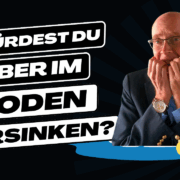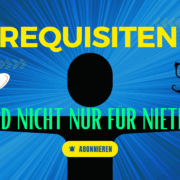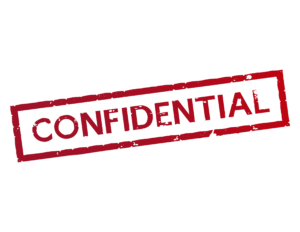“Spoke for too long? Never again!”
/in Presentation Skills, Presentation skills coaching, Tips and tricks, Tips for success, Video /by Thomas SkipwithWhat Barack Obama Taught Me about Stage Presence.
/0 Comments/in Presentation skills coaching, Tips and tricks, Tips for success /by Thomas Skipwith🎤 2008, Denver, Colorado.
Barack Obama takes the stage. 60,000 people in the stadium. Cheers. Goosebumps. “Yes, we can!” echoes through the night.
I sat glued to the YouTube recording – fascinated by his presence, his calm, his persuasiveness. ✨
💪 You too can have this effect on your business stage – whether in the meeting room or in front of 500 people.
In the following video, you will find my 3 best tips for more stage presence in business presentations:
Key takeaway:
✨ Be present – and your event will be a success. Your session. Your presentation. Your performance.
📺 If you want to give more attractive business presentations, subscribe to my YouTube channel now – and recommend it to others.
Because: Yes, you can! 😉
Thomas Skipwith
Mr. TNT for PNP (Tips and Tricks for Presentations and Pitches)
P.S.: Further tips and tricks from the series “100 Seconds for More Engaging Presentations” can be found at www.52redetipps.ch.
«100 Seconds for more Attractive Business Presentations»
/0 Comments/in Presentation skills coaching, Tips and tricks, Tips for success /by Thomas SkipwithMany presentations fail not because of the content, but because the speaker sounds like an elevator announcer.
Watch it in the video now: https://youtu.be/hxJbIA_H5Z0
In your next presentation, you’ll sound better if you pay attention to these 2 simple voice tips. 👇
✨ 1. Get out of the monotony!
If you always stay in the same pitch, it has a soporific effect 😴
👉 Instead, use dialogues to bring variety.
Example:
👔 Boss: «I am thrilled with your bridge design.»
😊 You: «Oh, that feels good!»
This shows that you are not a robot, but a speaker with melody in your voice 🎶
✨ 2. No ‘uptalk’!
Many end their sentences with a rising voice ↗️ – as if every statement were a question. That comes across as insecure.
Better: bring your voice down at the end ↘️ – clear, confident, convincing.
💡 Reminder: If the voice is monotonous, the mood drops right away.
👉 For even more professional tips on voice and appearance: be sure to check out Arno Fischbacher.
👉 And if you want to give more attractive business presentations: Subscribe to my YouTube channel now – and feel free to recommend it 🚀
Here’s to attractive presentations!
Thomas Skipwith
Mr. TNT for PNP (Tips and Tricks for Presentations and Pitches)
P.S.: Further tips and tricks from the series “100 Seconds for More Engaging Presentations” can be found at www.52redetipps.ch.
What an M60 Nut Has to Do with a Strong Presentation – Using Props Cleverly!
/0 Comments/in Presentation skills coaching, Tips and tricks, Tips for success /by Thomas Skipwith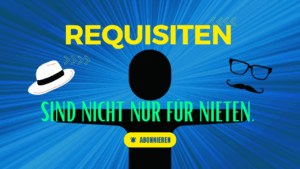
😴 The US Navy wanted to know: How long can people follow a presentation before mentally checking out?
The answer:
In the video: https://youtu.be/DVv6g-OJORk or below:
⏱️ After 22 minutes at the latest a change of media is needed – otherwise, it gets critical.
🎤 No wonder then that TED Talks are limited to 18 minutes.
And what happens in many companies?
➡️ 45 minutes of slides
➡️ A presentation like a sleeping pill – completely without side effects 😵💤
👉 The consequence:
If you really want to make an impact, you need variety!
A proven method: Use props 🎁
A participant in my training once said:
👷♂️ “I’m an engineer in turbine construction. I can’t drag a gas turbine onto the stage.”
My answer:
🔩 “Take an M60 nut with you!”
💡 Why?
-
An M60 nut, for example, stands for stability in economically turbulent times 🌪️.
-
It creates a moment of surprise.
-
And: The audience remembers your message better and longer.
Important:
📏 Choose a prop that is clearly visible.
🎬 And: Practice using it – otherwise, it will look awkward.
What was the most original prop you’ve ever seen or used in a presentation?
Share your experiences in the comments! 👇💬
Here’s to attractive presentations!
Thomas Skipwith
Mr. TNT for PNP (Tips and Tricks for Presentations and Pitches)
P.S.: Further tips and tricks from the series “100 Seconds for More Engaging Presentations” can be found at www.52redetipps.ch.
Why aren’t they doing what I say?
/0 Comments/in Presentation skills coaching, Tips and tricks, Tips for success /by Thomas Skipwith ✨ “This is a medication. Read the package insert or ask your pharmacist!” — Does that ring a bell? 🎯 Exactly! That’s the legendary final sentence of every medication advertisement.
✨ “This is a medication. Read the package insert or ask your pharmacist!” — Does that ring a bell? 🎯 Exactly! That’s the legendary final sentence of every medication advertisement.
But what does this have to do with presentations? 📊 A lot!
👉 Why a call-to-action is important:
Your audience needs clarity. Without clear instructions? 🧟♂️ Zombie mode activated.
With a clear call to action, you show: “I know what you should do now.” And yes, this builds trust! 🤝
🚀 How to smartly end your presentation:
“Visit my website and get the free e-book!” 📚
“Connect with me on LinkedIn!” 🔗
“Sign up for my newsletter!” ✉️
❌ No Thanks, that’s all
without added value.
✅ Always a next step for your audience.
💡 What’s your best call-to-action? Let’s exchange ideas in the comments! 👇
You can find more tips and tricks from the series “100 Seconds for More Attractive Presentations” at www.52redetipps.ch.
Thomas Skipwith
Mr. TNT for PNP (Tips and Tricks for Presentations and Pitches)
Score with a strong first sentence!
/0 Comments/in Presentation skills coaching, Tips and tricks, Tips for success /by Thomas Skipwith 💡 Did you know that people spend more time taking selfies than reading books? 🎯 Boom! Attention secured.
💡 Did you know that people spend more time taking selfies than reading books? 🎯 Boom! Attention secured.
A strong opening line is like a perfect selfie – it sticks in your memory. 📸 But how do you achieve this in your presentations, speeches, or pitches?
Here are 3 simple tips to make you a master of attention:
🔹 Start with a bang: A provocative question or surprising fact immediately draws your audience in. No room for clichés like “Ladies and gentlemen…” 🚫
🔹 Memorize your opening: Your first sentence must flow smoothly and confidently. Practice makes perfect – and ensures you appear poised. 💪
🔹 Make an impression in the first 7 seconds: First impressions count. Make sure it’s unforgettable! A clear message + strong voice = wow effect. ✨ 🤔
What was the best opening line you’ve ever heard – or said yourself?
Share it in the comments! 👇
Let’s learn from each other and improve together! 🚀
You can find more tips and tricks from the series “100 Seconds for More Attractive Presentations” at www.52redetipps.ch.
Thomas Skipwith
Mr. TNT for PNP (Tips and Tricks for Presentations and Pitches)
Five golden rules for an impressive Christmas speech for executives
/0 Comments/in Presentation skills coaching, Tips and tricks, Tips for success /by Thomas Skipwith The Christmas season is a special opportunity to share your appreciation and your vision for the coming year with your team. A successful Christmas speech is more than just words – it’s a moment that stays in memory. To help you shine in your company’s internal Christmas speech, I have compiled five proven tips for you: ________________________________________
The Christmas season is a special opportunity to share your appreciation and your vision for the coming year with your team. A successful Christmas speech is more than just words – it’s a moment that stays in memory. To help you shine in your company’s internal Christmas speech, I have compiled five proven tips for you: ________________________________________
- Start with a personal touch
Greet your team warmly and begin with a brief, authentic story from the past year. Personal insights create closeness and show that you’re speaking not just as a boss, but as a person. ________________________________________
- Express heartfelt thanks
The Christmas season is the perfect time to express gratitude. Acknowledge the achievements of your team and individual departments. Be specific – it comes across as sincere and motivating. ________________________________________
- Look optimistically to the future
After looking back on 2024, turn your gaze to 2025. Share your vision for the coming year and inspire your team with a clear, positive message. ________________________________________
- Short and sweet
A Christmas address should touch the team, but not tire them. Keep it brief (maximum 5-7 minutes), speak in clear sentences, and avoid technical jargon. The core message should be easy to understand and memorable. ________________________________________
- End with an emotional high point
Conclude your speech with a wish, a quote, or a heartfelt greeting that captures the Christmas spirit. A sentence like ‘I look forward to writing the next chapter of our shared journey with all of you’ leaves a lasting impression.
With these five tips, your Christmas address will become a highlight that not only impresses your team but also inspires them. I wish you much success with your speech and a peaceful Christmas season! Best regards
Thomas Skipwith
Mr. TNT for PNP (Tips and Tricks for Presentations and Pitches)
What are the 5 biggest challenges for STEM professionals?
/in Feedback, Presentation Skills, Presentation skills coaching, Tips for success /by Thomas SkipwithQuestion: What are the 5 biggest challenges for STEM professionals when presenting?*
Answer: It depends :-). It varies from person to person. But what I see over and over again in my training and coaching practice are the following challenges:
Adapt to the audience.
STEM professionals often find it difficult to present in a way that is generally understandable and tailored to the audience. Technical details often do not interest laymen. Therefore, do the grandparent test: If you give your presentation in such a way that even your grandparents understand what it’s about, you’re on the safe side.
Present in a structured way.
Those with training in one of the STEM subjects take a chronological rather than a dramaturgical approach. A clear outline with introduction, main part (body) and conclusion helps the audience to follow the presentation. This outline can also be found in movies, e.g. James Bond. The film starts with an exciting scene, increases the tension in the main part and ends with the resolution.
(In the book“To catch fish, use the right bait” you will learn how to structure a presentation using the Power Presentation Model PPM).
Use visualizations.
It is bad when you hear the sentence: “As you can see here”, but I as a listener can see little or nothing because of the large amount of numbers and/or text.
Complex relationships should be illustrated with graphics, diagrams or examples. It is easy to overwhelm the audience with text and numbers only.
Speak freely.
Many presenters with STEM backgrounds read off their slides. This is boring. Instead, you should speak freely and with eye contact to the audience. Especially online, this is not clear to many. Online, the mnemonic phrase of a colleague from the USA, Terry Brock, is: “Love your lens”.
Pay attention to body language.
An open attitude, gestures and facial expressions help to captivate the audience. Anyone who hides behind his laptop quickly loses the interest of the audience. Use the lectern exclusively as a repository for your notes. Move freely on the stage.
What are your challenges?
Here’s to attractive presentations!
Your
Thomas Skipwith
* STEM: science, technology, engineering and mathematics
Book recommendation
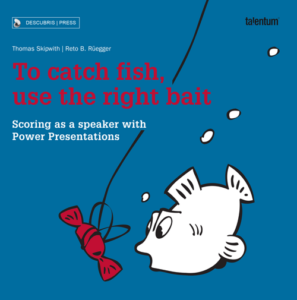 In the following book, you will find the tools, systems, and tips that will make you a persuasive speaker. So that you need less time for preparation, present more understandably and with more confidence.
In the following book, you will find the tools, systems, and tips that will make you a persuasive speaker. So that you need less time for preparation, present more understandably and with more confidence.
If you want support for a speech or presentation, please let me know (+41 41 630 39 90).
If you would like to have tips and tricks regularly by e-mail (in German), then sign up to the Trainingletter – but it’s confidential:-).
August 1 Speech: Viola Amherd speaks no matter what.
/in English, English, Feedback, Presentation Skills, Presentation skills coaching, Tips and tricks, Tips for success /by Thomas SkipwithOn July 31, 2023, Europaplatz in Lucerne became a special place. Federal Councillor Viola Amherd appeared before the audience and left a lasting impression.
In her concise ten-minute speech, Viola Amherd emphasized Swiss values and the sense of community. Despite the serious content, there were also light-hearted moments. The core message: Switzerland is solid as a rock.
Amherd made use of tried and tested rhetorical devices, among others
a) Humor
A little humor never hurts and makes you likeable. Despite two cancellations due to Corona and a broken elbow, Viola Amherd came to give her speech. After all, the organizers were just as persistent – they invited her three times.
b) Perseverance
A broken elbow would have kept many from giving a speech. But not Viola Amherd.
c) Amherd’s humorous, spontaneous replica
The gift from Andrea Gmür, member of the Council of States, was remarkable. She presented the Federal Councillor with two bottles of wine – one non-alcoholic and one with alcohol. Quick-wittedly, Amherd replied: “Just to clarify: my accident was before we had drinks”.
d) Memorable analogies
Amherd stressed that security and independence are deeply rooted in the Swiss DNA.
For Amherd, the Swiss Constitution of 1848 is the blueprint of our country.
In the “ground station” Switzerland, natives and immigrants live together peacefully.
She stressed the need for the European protective umbrella.
e) reference to a local person
A special moment was the mention of Emil Steinberger, a local personality from Lucerne.
What could she have done better or differently, in the view of presentation trainer Thomas Skipwith?
a) Punctual start
The 40-minute delay should be avoided in the future.
b) Memorable end
“Thank you very much for your attention. is an run-of-the-mill closing. Recommendation: An appeal, e.g. with the words: “To democracy, continuity and peace. “To our Constitution of 1848. To the birthday of Switzerland”.
c) Dialect
She spoke in easily understandable High German. As a Valaisan, a short interjection in the Valaisan dialect would certainly have gone down well.
Recommendations to the organizers
The audience from the 2nd row on could hardly see Mrs. Amherd. An elevation or platform for the speaker would be recommended.
Conclusion
It was worth the trip to Lucerne to hear Mrs. Amherd’s keynote speech. Also as an example of what you can do right in a keynote speech.
To attractive speeches!
Your
Thomas Skipwith
P.S.: Last minute checklist for your speeches: In this blog post.
Book recommendation
In the following book, you will find the tools, systems, and tips that will make you a persuasive speaker. So that you need less time for preparation and present with more confidence.
If you want support for a speech or presentation, please let me know (+41 41 630 39 90).
If you would like to have tips and tricks regularly by e-mail (in German), then sign up to the Trainingletter – but it’s confidential:-).
Thomas Skipwith
Thomas Skipwith helps executives, companies and individuals to present like a pro and avoid losing business and reputation through poor and boring presentations.
He is a regular speaker at major events and a five-time winner of the European Championship of Public Speaking.
Offerings
Contact
DESCUBRIS Ltd.
Thomas Skipwith
Bachmattstrasse 10
CH-8966 Oberwil-Lieli (near Zurich)
T: +41 41 630 39 90
E: speak [aet) thomas-skipwith.com



